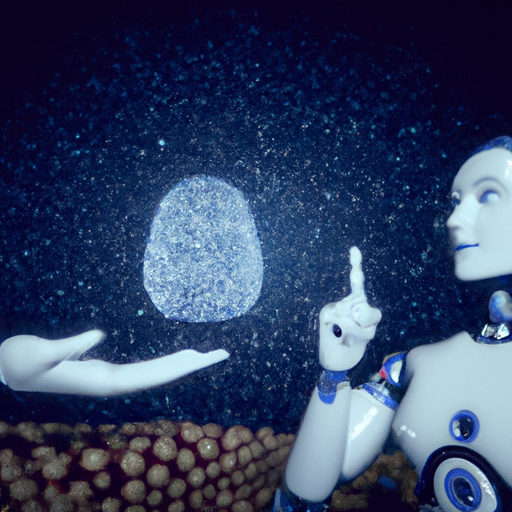
-
Table of Contents
Basics of artificial intelligence
Introduction
Artificial Intelligence (AI) is a rapidly growing field of computer science that focuses on creating intelligent machines that can think and act like humans. AI has the potential to revolutionize the way we interact with technology and the world around us. AI can be used to automate mundane tasks, improve decision-making, and even create new products and services. This article will provide an overview of the basics of AI, including its history, current applications, and future potential.
What is Artificial Intelligence and How Does it Work?
Artificial Intelligence (AI) is a branch of computer science that focuses on creating intelligent machines that can think and act like humans. AI is a broad field that encompasses many different technologies, including machine learning, natural language processing, robotics, and computer vision.
At its core, AI is a set of algorithms and techniques that allow machines to learn from data and make decisions without being explicitly programmed. AI algorithms are designed to recognize patterns in data and use that information to make decisions. For example, a machine learning algorithm might be trained on a large dataset of images and then be able to recognize objects in new images.
AI algorithms can be used to solve a variety of problems, from predicting stock prices to recognizing faces in photos. AI can also be used to automate tasks that would otherwise require human labor, such as driving a car or playing a game of chess.
AI is a rapidly evolving field, and new technologies are being developed all the time. As AI becomes more advanced, it will be able to tackle more complex tasks and become increasingly useful in our everyday lives.
Exploring the Different Types of Artificial Intelligence
Artificial Intelligence (AI) is a rapidly growing field of technology that has the potential to revolutionize the way we live and work. AI is a broad term that encompasses a variety of different types of technology, each with its own unique capabilities and applications. In this article, we will explore the different types of AI and discuss their potential uses.
The first type of AI is known as narrow AI, or weak AI. This type of AI is designed to perform specific tasks, such as facial recognition or playing a game of chess. Narrow AI is limited in its capabilities and is not capable of learning or adapting to new situations.
The second type of AI is known as general AI, or strong AI. This type of AI is designed to be able to learn and adapt to new situations. General AI is capable of performing a wide range of tasks, from playing a game of chess to driving a car.
The third type of AI is known as super AI. This type of AI is designed to be able to think and act like a human. Super AI is capable of performing complex tasks, such as understanding natural language and making decisions.
Finally, the fourth type of AI is known as artificial general intelligence (AGI). This type of AI is designed to be able to think and act like a human, but with greater intelligence than a human. AGI is capable of performing complex tasks, such as understanding natural language and making decisions, but with greater accuracy and speed than a human.
Each type of AI has its own unique capabilities and applications. Narrow AI is best suited for performing specific tasks, such as facial recognition or playing a game of chess. General AI is best suited for performing a wide range of tasks, from playing a game of chess to driving a car. Super AI is best suited for performing complex tasks, such as understanding natural language and making decisions. Finally, AGI is best suited for performing complex tasks, such as understanding natural language and making decisions, but with greater accuracy and speed than a human.
In conclusion, there are four main types of AI: narrow AI, general AI, super AI, and artificial general intelligence. Each type of AI has its own unique capabilities and applications, and can be used to revolutionize the way we live and work.
Basics of artificial intelligence:
The Benefits and Challenges of Artificial Intelligence
The use of Artificial Intelligence (AI) has become increasingly prevalent in recent years, and its potential applications are vast. AI is a form of computer technology that is designed to simulate human intelligence and behavior. It can be used to automate processes, improve decision-making, and even create new products and services. AI has the potential to revolutionize many industries, from healthcare to finance, and its use is becoming more widespread.
The benefits of AI are numerous. AI can be used to automate mundane tasks, freeing up time for more creative endeavors. It can also be used to improve decision-making, as AI algorithms can analyze large amounts of data quickly and accurately. AI can also be used to create new products and services, as it can be used to identify patterns and trends in data that may not be obvious to humans. Finally, AI can be used to improve customer service, as AI-powered chatbots can provide quick and accurate responses to customer inquiries.
However, there are also some challenges associated with AI. One of the biggest challenges is the potential for bias in AI algorithms. AI algorithms are only as good as the data they are trained on, and if the data is biased, then the algorithm will be as well. Additionally, AI algorithms can be difficult to interpret, as they are often based on complex mathematical models. This can make it difficult to understand why a particular decision was made. Finally, AI can be expensive to implement, as it requires specialized hardware and software.
In conclusion, AI has the potential to revolutionize many industries, but it also comes with some challenges. It is important to be aware of these challenges and to take steps to mitigate them. With the right approach, AI can be a powerful tool for improving decision-making, automating processes, and creating new products and services.
Conclusion
In conclusion, Artificial Intelligence is a rapidly growing field that has the potential to revolutionize the way we interact with technology. It has the potential to automate mundane tasks, improve decision-making, and even create new products and services. AI is already being used in a variety of industries, from healthcare to finance, and its potential is only beginning to be explored. As AI technology continues to develop, it will become increasingly important for businesses to understand the basics of AI and how it can be used to their advantage.
GPT 4 Cost and Features: Read More
Visit Google AI: Website
Basics of artificial intelligence
 LiveFarsi.Net LiveFarsi.Net – Tech and Tutorials
LiveFarsi.Net LiveFarsi.Net – Tech and Tutorials





Comments are closed.